Agriculture and Biosecurity newsletter: December 2023
Welcome to the Agriculture and Biosecurity newsletter for December 2023
Update on Banana Freckle response in the Northern Territory

Detection
A suspected case of Banana Freckle was brought into the Berrimah Agricultural Laboratory in Darwin in May 2022. Initial testing identified the presence of Banana Freckle. Verification from two independent laboratories outside of the NT confirmed the identification.
Through the EPPRD, a National Banana Freckle Response Plan was endorsed in July 2022. This is an agreement between the Australian Government, all states and territories, and industry bodies.
The joint government and industry response aims to eradicate Banana Freckle from the NT.
Quarantine measures for banana plants, fruit and materials, such as banana leaves, are currently in place to stop the spread of Banana Freckle both within the NT and also between the NT and other jurisdictions.
Quarantine measures in place
Within the NT, quarantine measures have been designed to limit the movement of bananas, banana plants and materials from properties with infected plants. Field teams are undertaking delimitation of properties within close proximity of Infected Properties (IPs) to contain the disease within these zones. If banana plants are identified within these close proximity zones, they are then checked for symptoms of the disease. If a property is confirmed to have Banana Freckle, all banana plants, regardless of cultivar are removed and destroyed.
Restricted inter-state/territory movement of bananas and banana plants remain in place with a permit required to import bananas, banana plants and materials across state and territory borders. Both Queensland and New South Wales require permits to move banana plants, fruit and materials into their banana growing regions with movement under strict quarantine controls; the NT requires a permit to import banana fruit, plants and material.
Why is Banana Freckle so important to eradicate?
Banana Freckle is a serious threat to the Australian banana industry. The eradication of P. Cavendishii is considered to be of vital importance to protect the Australian Banana Industry. In the 2000/21 year 362,000 tonnes of bananas were grown in Australia, with a retail value of $652 million. 95% of these bananas were sold into the domestic market. Australians consume more than 5 million bananas every day.
The disease decreases plant health and productivity by reducing the amount of healthy leaf area, affecting the appearance of the fruit, and reducing yield. Blemishes on fruit also reduces the marketability of the fruit. The plant pest disease would also increase production costs through the use of additional fungicide sprays and the management of the fungal pathogen through removal of infected plant material. Increase production costs will impact the economic viability of farming bananas.
The establishment of this plant pest disease in Australia might open the door to banana imports from countries where P. Cavendishii on Cavendish Bananas is endemic. This would have wide-ranging impacts on the Australian banana industry.
The National Banana Freckle Response team, led by the NT, is working to eradicate this plant pest disease to protect the Australian banana industry. For more information on the National Banana Freckle Response go to Northern Territory Government website.
Award on Biosecurity Presentation
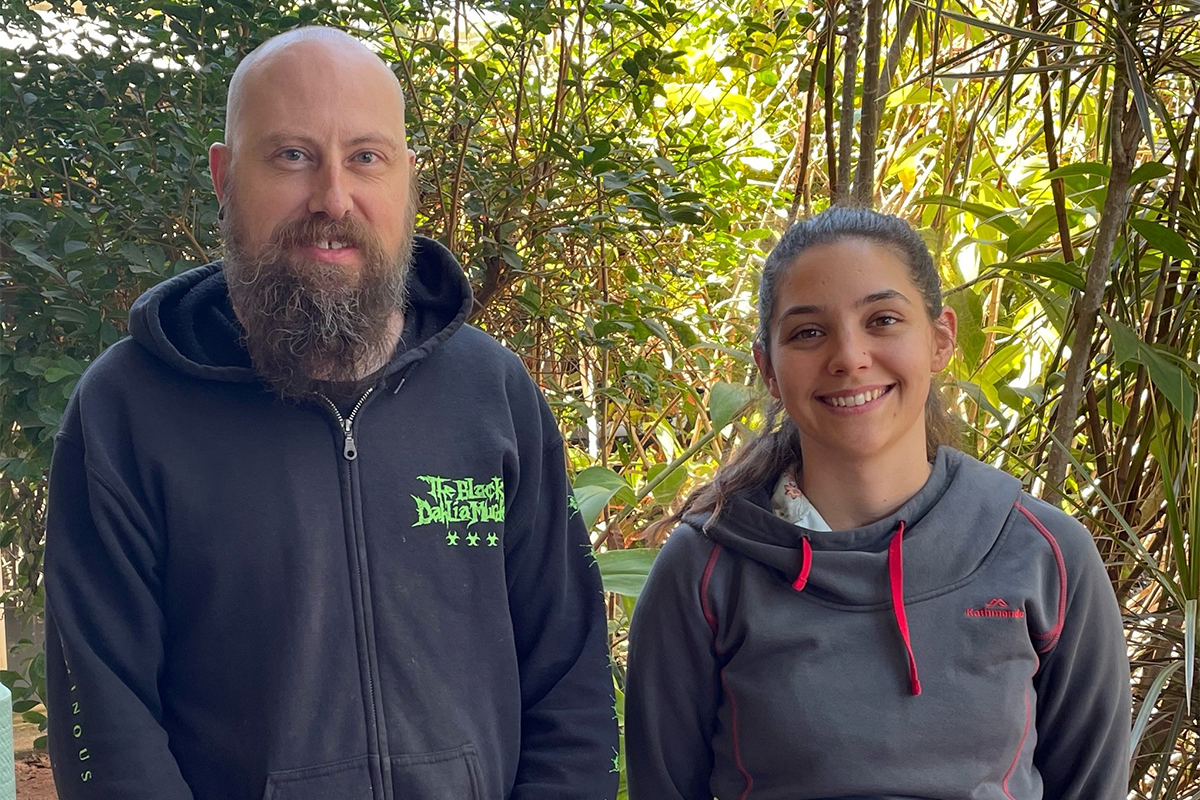
Mark Sistrom and Hannah Andrews had the opportunity to represent the Northern Territory (NT) Government at the 2023 Association of Biosafety for Australia and New Zealand (ABSANZ) Conference in Queenstown to share some of the work they have been doing through the Northern Australia Biosecurity Sequencing (NABSeq) Network.
Mark discussed ‘Bringing high throughput sequencing to biosecurity in Northern Australia’ including a new approach to high profile disease exclusions such as Lumpy Skin Disease and Foot-and-Mouth Disease, and how sequencing can be applied in the field for pen-side diagnostics as well as current environmental DNA (eDNA) approaches to surveillance of sentinel animals.
Hannah presented her talk ‘Using Wildlife as an Approach to Animal Disease Surveillance’, speaking on the discovery of novel viruses within the Northern Territory’s wildlife populations.
Both talks were attended by almost 200 delegates and prompted exciting discussions on several topics, ranging from emergency animal disease preparedness to dealing with unique challenges in the field (such as crocodiles!). These discussions have enabled critical relationship building between the NT Government and project collaborators across the Australasian region and brought the incredible work of the NABSeq Network into focus at the international level.
Hannah, who is a Molecular Scientist with the Department of Industry, Tourism and Trade, took home the award of ‘Best Presenter’ for her presentation discussing the role of wildlife in transmission and circulation of viruses in Northern Australia.
Gamba Action Program Begins
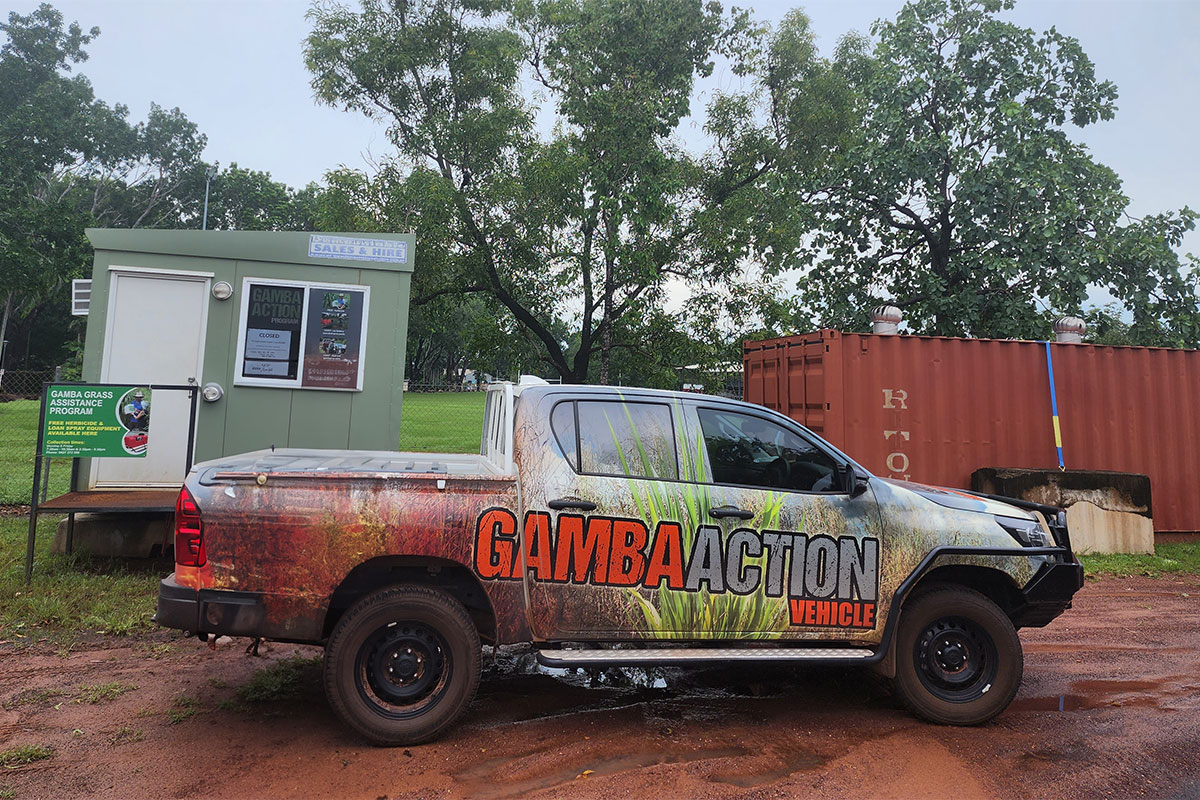
The Gamba Action Program is now in its 13th year, which continues to provide rural landholders with support in the fight against gamba grass.
The program supports over 2200 rural landholders each year to gain access to free equipment hire, herbicide and weed management advice.
Multiple outlets across the Top End opened on Friday 1 December for landholders to pick up their allocation, go to the nt.gov.au/gamba website for operational hours and locations. Katherine GAP will commence 1 February 2024.
The Gamba Action Program is one of a number of programs within the Gamba Management Framework, which provides a solid approach to gamba management, fire management, and fuel load reduction and infestation control.
Let us all work together to reduce the threat of gamba grass in the Territory.
Welcome to our new Livestock Industries Engagement Officer
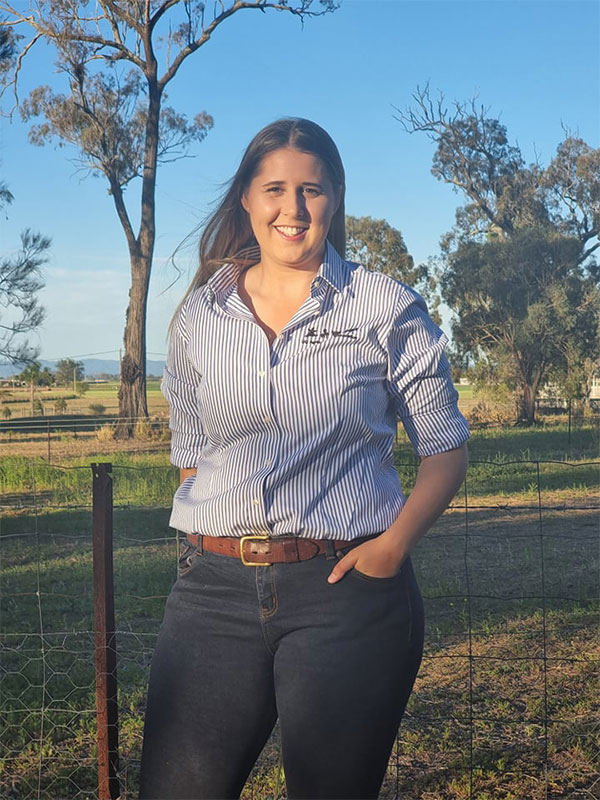
Georgia has joined the department as a Livestock Industries Engagement officer in our Alice Springs office. She joins us after some time working in Western NSW in the pest management and riparian restoration area. Her previous role included liaising with landholders and a variety of not-for-profit organisations, government agencies and community services. She looks forward to bringing together these skills and passion for the Northern Territory agriculture sector.
Georgia is originally from Central Australia and although she moved away at a young age, she has been a regular visitor to the district (in particular to the cattle section of the Alice Springs Show!). She has a Dual Degree of a Bachelor of Agricultural Science majoring in Animal Science and a Bachelor of Agribusiness from the University of Queensland. Georgia has always had a keen interest in the Northern Territory cattle industry and is excited to be working in Central Australia.
Georgia Said “Stepping into this role I am keen to hear from producers what they are after from our extension services and how we can best support them.”
If you have any questions for Georgia, you can contact her on 8951 8111 or georgia.anderson@nt.gov.au.
Need help building your Farm Safety Plan?
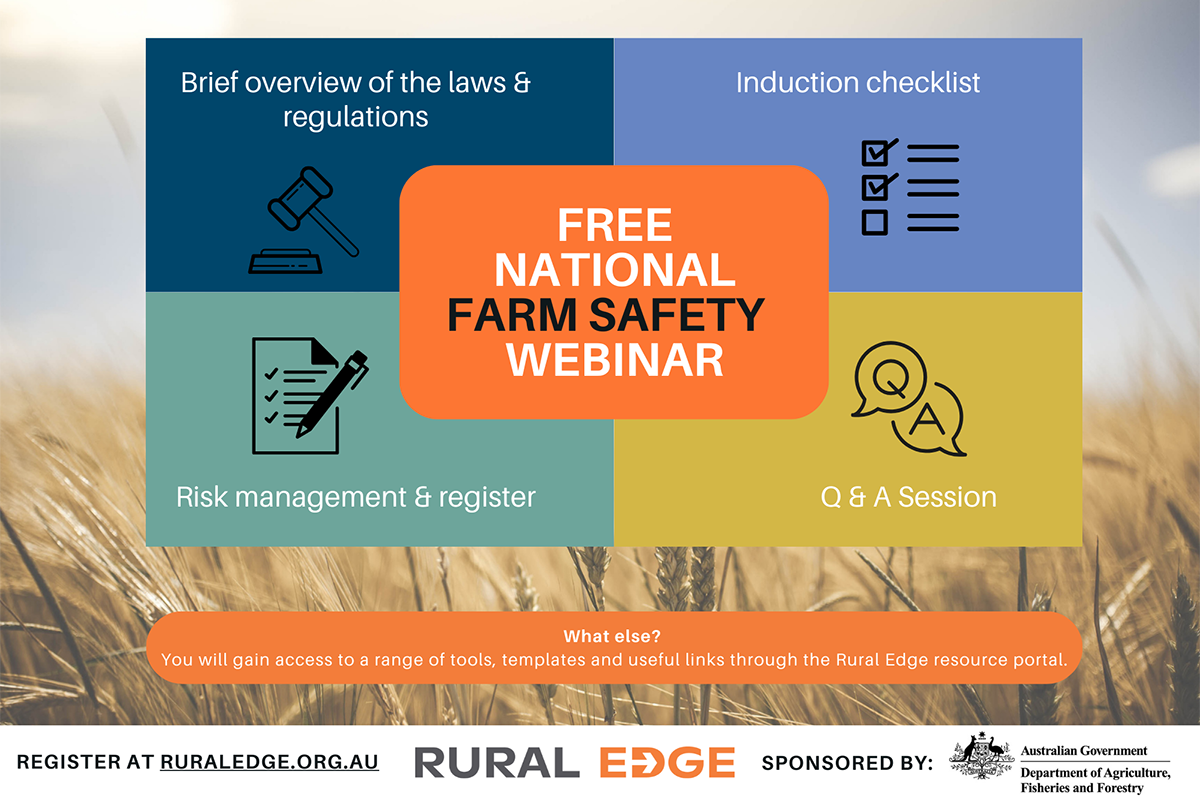
We all recognise the need to keep our farming families and businesses safe during busy work periods, especially when there are young and old family members working alongside short-term employees. While we are often told about what we need to have in place for a safe workplace, it is how to implement a farm safety plan that is the hardest step in the whole process!
Rural Edge have developed an online Farm Safety Short Course for farm business owners, managers, and workers to support the early steps into developing a farm safety plan. This short course gives farm businesses the chance to develop or update their farm risk register, learn how to use a simple induction checklist for new employees, and learn from other farmers about easy and practical ways to keep all farm business families and employees safe during busy periods.
The Farm Safety Short Course currently enjoys a 100% satisfaction rating, as all participants in this short course would recommend it to others, and their understanding and attitude towards farm safety has increased through joining this short 2-hour safety conversation.
Participants will be guided through the core ingredients of a farm safety plan, including a brief overview of the laws & regulations, the need for an induction checklist, and how to develop your Farm Risk Register.
As a bonus, time spent talking to others during the course will help to pick up some tips and tricks to make your farm business that little bit safer. A large range of tools and templates are also available to all participants through the Rural Edge information portal.
The next National Online Farm Safety Short Course will be held for NT on Thursday7th December 2023. Join us over lunch: 12pm – 2pm!
Register now to secure your place and join like-minded peers to support each other in identifying risks/hazards and work towards developing your own farm risk register.
To register, go to the Rural Edge Asutralia website.
This course is normally offered at $149/person but is being offered for FREE through support from the National Farm Safety Education Fund. The session will be facilitated by ProcessWorx who are experienced in supporting agricultural businesses in developing and implementing their health and safety plans.
This Short Course is supported by the Department of Agriculture, Fisheries and Forestry through the National Farm Safety Education Fund. Healthier farms begin with safer practices.
Gumatj Traditional Owners at ANZIF conference: Forests, livelihoods and the future of native forestry

Participants in the ‘Indigenous Commercial Forestry Opportunities – East Arnhem’ and ‘Safeguarding Indigenous-led forestry industries in northern Australia’ projects were invited to present a 1.5 hour panel session titled ‘Opportunities and challenges for Indigenous forest livelihoods in the East Arnhem context’ at the recent Australia and New Zealand Institute of Forestry (ANZIF) Conference in Queenland.
Project partners, including four Traditional Owners from Birany Birany homelands, University of the Sunshine Coast’s Tropical Forests and People Research Centre, DITT’s Forestry Group and Queensland’s Department of Agriculture and Fisheries travelled to the ANZIF conference on the Gold Coast to present project outcomes from two Research Development and Extension (RD&E) projects. The project team were joined on the panel by representatives from Australia’s two sustainable forest management certification bodies, Forest Stewardship Council and Responsible Wood.
There were over 450 delegates at the conference and David Yunupingu, David Wirrpanda, Mabo Mununggurritj and Naomi Munyarryun from Gumatj clan had the opportunity to share a video they had recently made for the conference titled ‘Eight Steps to Community Forestry’. The panel members spoke about the importance of sustainable forest livelihoods on Country for future employment and economic opportunities for men and women of all ages.
Some of the key highlights presented in the session were the importance of merging Traditional Owner forest management practices and values with the Western sustainable forestry model. The values of non-timber forest products in a community based forestry system were also discussed, including opportunities for payment for ecosystem services and the importance of sustainable forest management certification. The panel shared how the development of new products such as solid roundwood (including bollards and posts), and shelter kits diversify on Gumatj’s current product range, and called attention to the importance of developing culturally appropriate training and skills building programs to grow the local Yolngu forestry workforce.
The Chair of Tiwi Plantations Corporation, Kim Puruntatameri, and the Deputy Chair, Gibson Farmer Illortaminni, also attended the ANZIF conference. This was a great opportunity for the two Indigenous-owned forestry industries in the Northern Territory to share knowledge and experiences on plantation and native forestry opportunities and discuss pathways to successful and sustainable industries.
Thank you to Forest and Wood Products Australia, University of the Sunshine Coast, NTG Department of Industry, Tourism and Trade, Plant Health Australia, Midway Ltd and Forestry Australia for sponsoring the Traditional Owners from East Arnhem and Tiwi Islands forestry industries to participate in this amazing event.
Animal Welfare Branch team up with RSPCA
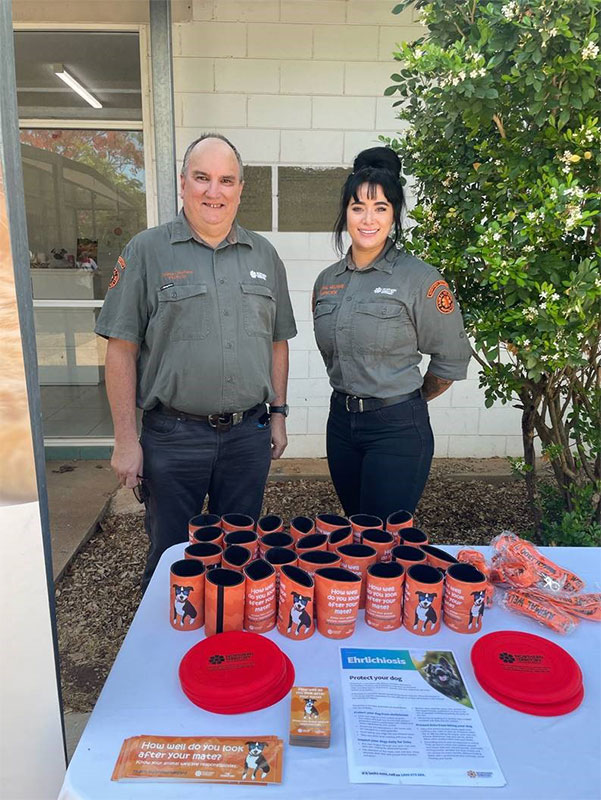
Two of our team were on hand to provide advice on how best to look after your pets and key information about what diseases you need to be mindful of here in the Territory. As well as providing useful advice, the team handed out lots of merchandise to the community including branded animal welfare dog leads, frisbees, stickers, magnets and stubby coolers to pet owners. “It was great to be able to attend the RSPCA microchipping event.”
Senior Animal Welfare Officer, Cobi Izod said, “There was lots of very cute, healthy puppies in attendance who got microchipped on the day. Microchipping is very important to reuniting lost pets, especially this time of year when storms are frequent.”
As we have entered the build-up to the wet season, some diseases become more rampant, including Ehrlichiosis (E.Canis), which spreads through ticks. The Animal Welfare team are reminding dog owners that E.Canis can be fatal if not effectively treated with tick collars and “spot-on” treatment that repel and kill ticks.
Symptoms of E.Canis include fever, lethargic behaviour, and loss of appetite and swelling of the chest or front legs. You should contact your vet if you have any concerns about your dogs’ wellbeing, as early treatment provides the best chance of recovery.
You can find out more about E.Canis and how best to protect your dog on the Ehrlichiosis disease in dogs.
Plant Industries presentation at Global Hemp Manufacturing and Commercialisation Summit

Shah Nawaz, from Northern Territory Government presented “Potential of establishing industrial hemp value chains in the Northern Territory of Australia” at the 2023 Global Hemp Manufacturing and Commercialisation Summit, held in Melbourne, earlier this year.
This summit provided a unique avenue for the participants to share and expand their knowledge and professional network that will support collaborative research and commercialisation into all aspects of farming, and business applications of industrial hemp.
The 2 day event covered keynote presentations and insights into cutting edge building applications, the agronomy of industrial hemp, and trending consumer industrial hemp products. Shah Nawaz acquired the latest industry knowledge from the summit participants on potential of industrial hemp in carbon farming, termite’s threat for hempcrete industry, AgriFutures Australia investment on industrial hemp as emerging industry, and regulatory challenges faced by Australian industrial hemp industry stakeholders.
Carbon farming and hempcrete resistant against termites can be potential areas of research for Northern Territory. Networking opportunity to connect with industry professionals from University of Melbourne, AgriFutures Australia, Australian Hemp Council, Australian Industrial Hemp Alliance, Greenlab, iHemp Victoria and Hemptech Malaysia will open doors for future research collaborations.
Strengthening partnerships with Indonesia
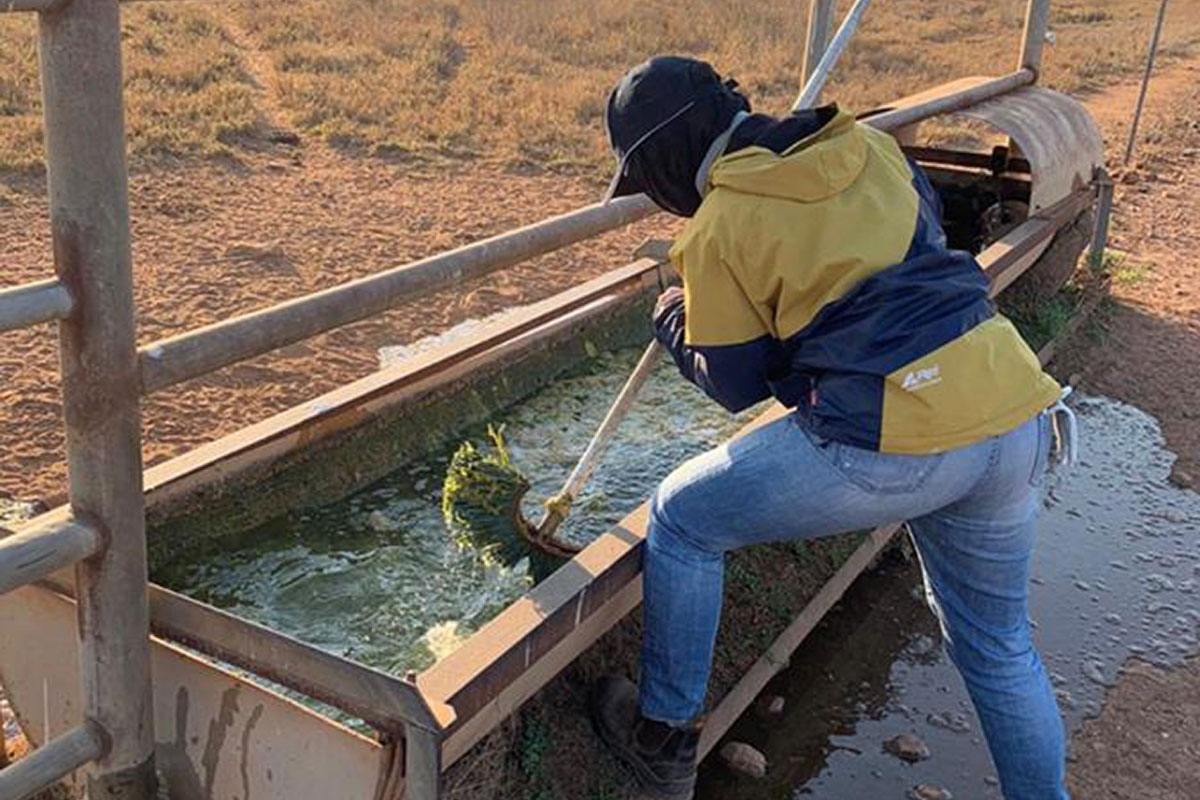
The Northern Territory Government and Universitas Gadjah Mada have signed a Letter of Intent to extend the successful Indonesia-Northern Territory Biosecurity Program in 2024.
The program, established in 2022, has been providing Indonesian students with the opportunity to participate in a Territory skills exchange to strengthen biosecurity networks. The program includes placements at Victoria River Downs Station, Katherine Research Station, and Berrimah Farm.
The NT Government staff recently travelled to Indonesia as part of a delegation and attended the predominant Indonesian University, confirming that the program will be extended. This initiative demonstrates the region's strengths as dynamic strategic partners and highlights the value of building further biosecurity knowledge and skill sharing, training, as well as research and development opportunities.
The program aims to manage biosecurity in a rapidly changing environment, requiring skilled, well resourced, and connected people working together to meet current and future challenges.
Solenopsis mealybugs can survive on ratoon cotton
The Northern Territory Government (NTG) through the Department of Industry, Tourism and Trade (DITT) is implementing the ‘Addressing the fundamentals of cropping-systems that deliver sustainable growth of agriculture sector in the Northern Territory’ project. This project is co-funded by NTG, Cooperative Research Centre for Developing Northern Australia (CRCNA), Cotton Research and Development Corporation (CRDC), and Grains Research and Development Corporation (GRDC). Trials are being implemented in Douglas and Katherine regions of the Northern Territory (NT) to demonstrate the impact of an integrated farming system on sustainable productivity and profitability of the NT farmers. As part of a broader project examining the impacts of differing soil nutrition, cover and rotation crops; a rain-fed cotton trial was established at the Katherine Research Station (KRS) in the 2022-2023 growing season. Major pest insects observed in the trial during the season included Pale cotton stainer (Dysdercus sidae) and Solenopsis mealybug (Phenacoccus solenopsis).
Following post-harvest mulching of the cotton in November 2023, Solenopsis mealybugs were observed surviving on reshooting ratoon plants (Figure 1). These mealybugs, if not managed, can repopulate and reinfest the next season’s crop.

Figure. 1 Solenopsis mealybugs on ratoon cotton at Katherine Research Station, identified by the two rows of black spots on their bodies (left) and three ratoon cotton plants in a row at KRS with small (<2cm) leaves (right)
Northern Territory weather increasing the severity of Solenopsis mealybugs
Solenopsis mealybugs are severe pests of cotton that feed on the terminal growth of plants, often under the leaves and inside bracts of squares and bolls. Very young mealybugs (crawlers) can be inadvertently carried to other sites on clothing and machinery, necessitating the implementation of ‘come clean, go clean’ field biosecurity measures. Affected plants develop distorted leaves and undersized bolls, and the mealybugs also produce a sticky, sugary liquid that can result in poorer bale quality due to the growth of sooty mould. Heavy infestations can result in plant death or make seed cotton so sticky that it becomes un-ginnable. In the warmer cotton-growing climate of Northern Australia, particularly the NT, Solenopsis mealybug can remain active the whole year-round on ratoon crop (Figure 1) or surviving alternative hosts. Much of the growing season coincides with the rainy monsoon period, and the humidity promotes the growth of sooty mould.
Recommended and available management options
CRDC and CottonInfo (2023) normally recommends the physical destruction of ratoon cotton to prevent future mealybug infestations[1], however this approach is not preferred in the NT’s rain-fed cotton due to the dryness of the soil at post-harvest. Killing ratoon cotton with herbicide is also difficult as the reduced leaf area post-defoliation limits chemical uptake and control efficacy. Additionally, even when all foliage is killed by herbicide, mealybugs can persist in the root zone of plants for several weeks without food or water.
Natural predators of mealybugs such as ladybird beetles (Figure 2), lacewings and parasitic wasps can completely control mealybug outbreaks. They readily discover scattered Solenopsis populations amongst ratoons and early in the growing season, migrating into the crop from nearby vegetation. It is important to avoid the use of pesticides such as dimethoate and pyrethroids that are highly toxic to biological control agents - disrupting them leads to flare ups of aphids later. The use of spirotetramat (Movento®), while effective on Solenopsis mealybug, requires two applications[2], is highly toxic to populations of beneficial lacewings2, and can accelerate the development of resistance in silverleaf whitefly. Transform® (Sulfoxaflor) can also be effective when applied as a last resort, however it can be washed off leaves if heavy rain or storms occur within 3 days of application[3]. Over the Northern Australian monsoon season, this limits opportunities for its effective use.
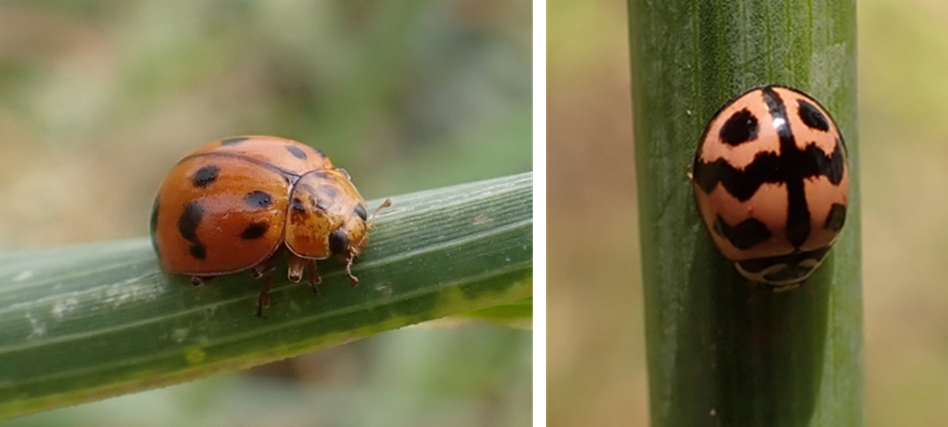
Figure 2. A Three banded ladybird (Harmonia octomaculata) found along a fenceline at KRS, less than 200m from Solenopsis-infested ratoons (left) and A Six-spotted zigzag ladybird (Cheilomenes sexmaculata) from a fennel crop near the cotton ratoons (right).
As beneficial ladybird beetles including Three banded and Six-spotted zigzag (Figure 2), are abundant near the ratoon plants at Katherine Research Station, we are optimistic that they will soon begin feeding on the mealybugs and we do not plan to implement chemical control at this stage. Hotspots will continue to be monitored through the rotation crop and next growing season, and action considered only if the population exceeds published economic thresholds.
On the NT cotton farms, local environmental conditions limit the effectiveness of physical crop destruction and chemicals in controlling mealybug populations. Encouraging populations of natural predators and parasitoids of mealybugs reduces expenditure on chemicals, decreases selection pressure for pesticide resistance, and forms part of an integrated pest management (IPM) strategy.
Way forward to reduce the pest pressure
A complementary strategy to reduce Solenopsis mealybug populations in the field is preventing the establishment of alternative host plants. Solenopsis mealybugs are polyphagous and can feed on several other crops including eggplant, tomatoes, chilli, melons, potatoes and mungbeans; as well as several weed species such as pigweed, stagger weed, parthenium weed, bind weed, sow thistle, bladder ketmia, native rosella, vines (cow, bell and potato), crownbeard and volunteer cotton[4].
Removal of weeds and volunteer cotton, choosing non-susceptible cover and rotation crops, as well as avoiding planting of susceptible crop hosts nearby (especially upwind), will decrease mealybug pest pressure in the cotton crop.
For more information, visit https://industry.nt.gov.au/industries/primary-industry/agriculture, email Plant.Industries@nt.gov.au, or contact the following:
Simon Ong (Entomologist): 08 8 8973 9722 or Simon.Ong@nt.gov.au
Edward Mwando (Cropping Group Leader): 08 8973 8516 or Edward.Mwando@nt.gov.au
Brian Thistleton (Principal Entomologist): 08 8999 2257 or Brian.Thistleton@nt.gov.au
Acknowledgements
This study was made possible by the Northern Territory Government staff through its co-funded project with Cooperative Research Centre for Developing Northern Australia (CRCNA), Cotton Research and Development Corporation (CRDC), and Grains Research and Development Corporation (GRDC). Cropping Group colleagues of Plant Industries Group within the Northern Territory Government are highly appreciated for their constructive input during the writing of this document. Paul Grundy is acknowledged for his kind feedback and suggestions, and Mook Crothers for his knowledge of the planting history and field conditions at Katherine Research Station.
Give feedback about this page.
Share this page:
URL copied!